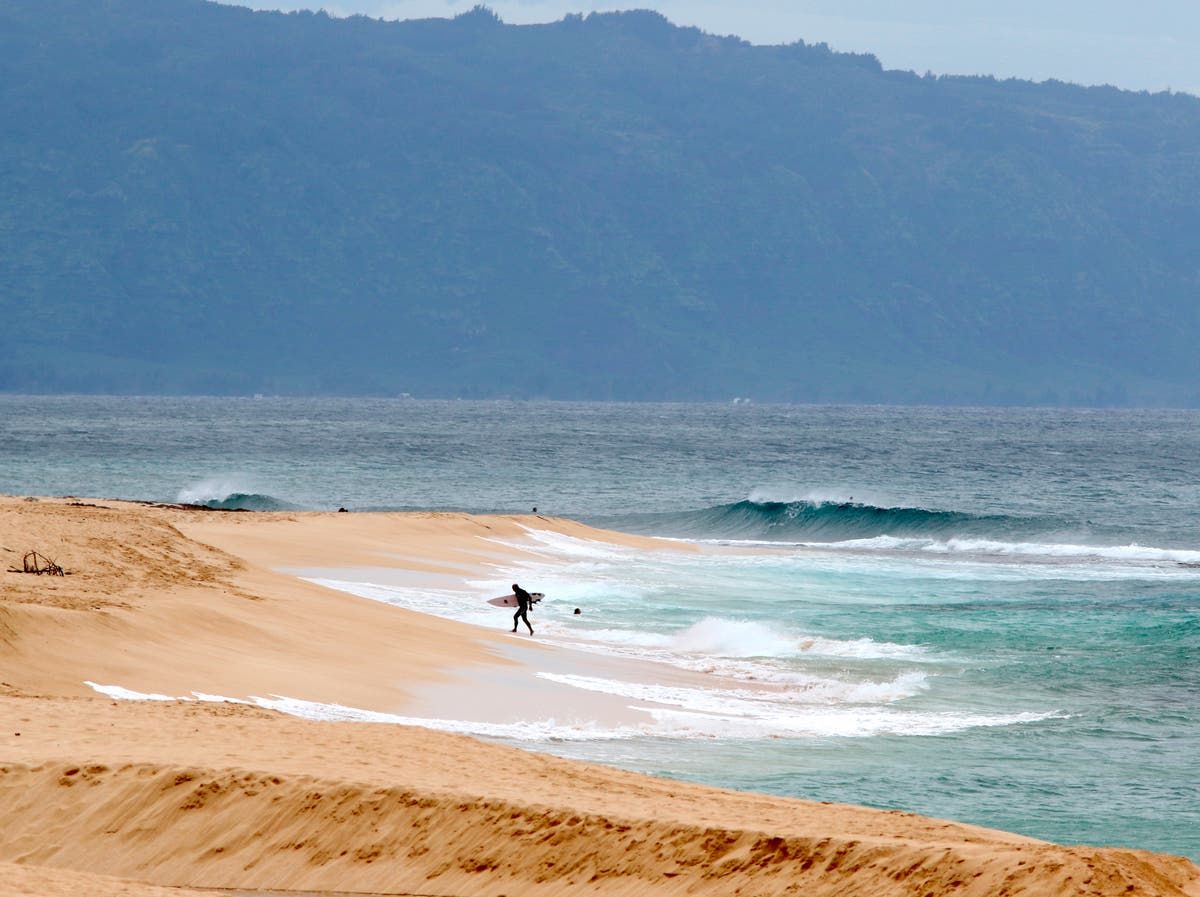Shark Attack Statistics and Patterns in Hawaii
Shark attack hawaii – Shark attacks in Hawaii are relatively rare, but they do occur. Over the past decade, there have been an average of two shark attacks per year in Hawaii. The most common species of sharks involved in attacks are tiger sharks, followed by great white sharks and Galapagos sharks.
The ocean’s unforgiving embrace claimed another life in Hawaii, a grim reminder of the ever-present danger that lurks beneath the waves. As the news of the shark attack spread, it reached the ears of Tamayo Perry, a renowned waterman and shark expert from Hawaii.
With a heavy heart, Perry offered his condolences to the victim’s family, while also highlighting the importance of respecting the ocean’s boundaries.
Shark attacks in Hawaii tend to occur most frequently during the summer months, when the water is warmer and there are more people in the water. The majority of attacks occur in the waters off Oahu, followed by Maui and Hawaii Island.
The ocean’s surface churned violently, a shark’s dorsal fin slicing through the water with predatory grace. But as the sun began to set, casting a golden glow on the Hawaiian shores, the fear of shark attacks receded, replaced by the anticipation of a different kind of battle.
The Dodgers and Angels, two legendary baseball teams, were set to face off in a thrilling matchup at the iconic Dodger Stadium. Dodgers vs Angels , the rivalry that had captivated generations of fans, would soon unfold on the diamond, offering a thrilling spectacle that would rival the ferocity of the ocean’s apex predator.
Factors Contributing to Shark Attacks
- The presence of prey: Sharks are attracted to areas where there is a lot of prey, such as fish, sea turtles, and seals.
- Water temperature: Sharks are more active in warm water, so attacks are more likely to occur during the summer months.
- Human activity: Sharks are more likely to attack people who are swimming, surfing, or diving in the ocean.
Factors Contributing to Shark Attacks in Hawaii

Shark attacks in Hawaii are a complex phenomenon influenced by a multitude of factors. Understanding these factors is crucial for developing effective strategies to mitigate the risk of encounters between humans and sharks.
Water Temperature and Visibility, Shark attack hawaii
Water temperature plays a significant role in shark behavior. Sharks are ectothermic, meaning they rely on external sources to regulate their body temperature. Warm water provides a more favorable environment for sharks, increasing their activity levels and metabolic rates. Higher water temperatures also enhance visibility, making it easier for sharks to spot potential prey.
Prey Availability
The abundance and availability of prey species can influence shark distribution and behavior. Sharks are opportunistic predators that feed on a wide range of marine life, including fish, sea turtles, and marine mammals. Areas with high concentrations of prey species attract sharks, increasing the likelihood of encounters with humans.
Human Activities
Human activities can significantly impact shark behavior and the risk of attacks. Swimming, surfing, and fishing are popular activities in Hawaii that bring humans into close proximity with sharks. Sharks may be attracted to the splashing and noise associated with these activities, mistaking humans for potential prey.
Environmental Factors
Environmental factors, such as coral reef health and ocean currents, can also influence shark distribution. Healthy coral reefs provide important habitat and shelter for prey species, attracting sharks to these areas. Ocean currents can transport sharks to different locations, influencing their encounters with humans.
Prevention and Mitigation Measures for Shark Attacks in Hawaii: Shark Attack Hawaii

Minimizing the risk of shark attacks requires a combination of public education, adherence to safety guidelines, and the deployment of effective deterrents. Understanding shark behavior and patterns, as well as implementing appropriate measures, can significantly reduce the likelihood of encounters.
Designated Swimming Areas and Nighttime Avoidance
Designated swimming areas, often marked with buoys or signs, are closely monitored and patrolled by lifeguards, providing a safer environment for swimmers. Avoiding swimming at night, when sharks are more active, further reduces the risk of encounters.
Shark Deterrents
Electronic shark deterrents, such as Sharkbanz and Shark Shield, emit electrical pulses that create an uncomfortable sensation for sharks, deterring them from approaching. Physical barriers, like shark nets or drumlines, can also be effective in separating sharks from swimmers.
Public Education and Awareness
Public education campaigns play a crucial role in preventing shark attacks. Educating beachgoers about shark behavior, safety measures, and responsible ocean practices empowers them to make informed decisions and minimize risks. Awareness campaigns also encourage reporting of shark sightings, aiding in tracking and monitoring shark populations.
The ocean’s tranquil surface belies the lurking danger beneath. Shark attacks in Hawaii, a grim reminder of the unpredictable nature of nature. Yet amidst the fear, there are those who stand as beacons of courage. Like Tamayo Perry, the lifeguard whose swift actions saved countless lives.
His bravery serves as a testament to the indomitable spirit that faces the ocean’s perils head-on, a beacon of hope in the face of nature’s wrath.
In the azure waters of Hawaii, where tranquility often reigns, the recent shark attack on Tamayo has sent ripples of fear through the community. This harrowing incident, which you can read more about at shark attack hawaii tamayo , has served as a grim reminder of the hidden dangers that lurk beneath the waves, forever altering the perception of Hawaii’s idyllic shores.
In the azure waters off Hawaii, a rogue shark had struck, its razor-sharp teeth sinking into the flesh of an unsuspecting swimmer. The news spread like wildfire, casting a pall over the idyllic beaches. Yet, amidst the horror, a curious tale emerged.
A group of divers, their faces painted like the buccaneers of old, had been filming a documentary about Tamayo Perry, the legendary pirate of the Caribbean. As they ventured deeper into the ocean’s depths, they stumbled upon the same shark that had attacked the swimmer, its eyes glinting with a strange, almost human-like intelligence.